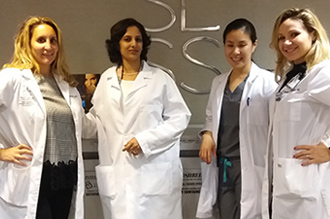Tinea Facei
- What is Tinea Faciei , Tinea Manuum, Tinea Pedis?
Fungal infection affecting the non-bearded areas of the face, characterized by inflammatory and non-inflammatory lesions. These appear as a red rash on the face, followed by red, small bumps.
- Tinea faciei
Fungus affecting the interdigital and palmar surfaces of one or both palms.
- Tinea manuum
The most common fungal disease in humans, athlete’s foot, (tinea pedis), also known as ringworm of the foot, is a surface (superficial) fungal infection of the skin of the foot.Tinea pedis
- Who’s at risk?
It is more common in males. Children rarely develop athlete’s foot. It may be passed to humans by direct contact with infected people, infected animals, contaminated objects (such as towels or locker room floors), or the soil.
Some conditions make athlete’s foot more likely to occur:
- Living in warm, humid climates
- Using public or community pools or showers
- Wearing tight, non-ventilated footwear
- Sweating profusely
- Having diabetes or a weak immune system
- What are the signs and symptoms?
It is more common in males. Children rarely develop athlete’s foot. It may be passed to humans by direct contact with infected people, infected animals, contaminated objects (such as towels or locker room floors), or the soil.
Some conditions make athlete’s foot more likely to occur:
- It can look different depending on the part of the foot (or feet) involved and the fungus (i.e. dermatophyte) which has caused the infection:
- On the top of the foot, athlete’s foot appears as an itchy red scaly patch ranging in size from 1 to 5 cm. The border of the affected skin may be raised, with bumps, blisters, or scabs. Often, the center of the lesion has normal-appearing skin with a ring-shaped edge.
- Between the toes (the interdigital spaces), athlete’s foot may appear as inflamed, scaly, and soggy tissue. Splitting of the skin (fissures) may be present between or under the toes.
- On the sole of the foot, athlete’s foot may appear as pink-to-red skin with scales.
- Another type of tinea pedis infection, called bullous tinea pedis, has painful and itchy blisters on the arch (instep).
- The most severe form of tinea pedis infection has shallow open sores (ulcers). These lesions are especially common between the toes but may involve the entire sole. Because of the numerous breaks in the skin, lesions commonly become infected with bacteria. Ulcerative tinea pedis occurs most frequently in people with diabetes and others with weak immune systems.
- What is the treatment?
To confirm the diagnosis of athlete’s foot, your physician might scrape some surface skin material (scales) onto a glass slide and examine them under a microscope.
- Wash your feet daily and dry them carefully.
- Use a separate towel for your feet, and do not share this towel with anyone else.
- Wear socks made of cotton or wool, and change them once or twice a day, or even more often if they become damp.
- Wear sandals as often as possible.
- Apply antifungal powder to your feet and inside your shoes every day.
Most infections can be treated with topical creams and lotions, containing:
- Terbinafine
- Clotrimazole
- Miconazole
- Econazole
- Oxiconazole
- Ciclopirox
- Ketoconazole
- Sulconazole
- Naftifine
- Butenafine
- Compounds containing urea, lactic acid, or salicylic acid to help dissolve the scale and allow the antifungal cream to penetrate better into the skin
- Solutions containing aluminum chloride, which reduces sweating of the foot
- Antibiotic creams to prevent or treat bacterial infections, if present.
Rarely, more extensive infections or those not improving with topical antifungal medications may require 3–4 weeks of treatment with oral antifungal pills, including:
- Terbinafine
- Itraconazole
- Griseofulvin
- Fluconazole
- Ketoconazole
- The infection should go away within 4–6 weeks after using effective treatment.
- What will be the cost for treating a case of tinea faciei or tinea manuum or tinea pedis?
A single consultation with Dr. Rinky Kapoor is chargeable at approximately INR 1000/-.
Your Dermatologist would be the best person to advise you regarding which treatment you should undergo.
For more information on Dr. Rinky Kapoor’s work, click on: theestheticclinic.com/dr-rinky-kapoor.html





